Panzerkampfwagen III
The Chosen One
The Panzer III is a pretty little tank, and a very good one. Yes, it had a smaller gun than the similar Somua S35. And no, it wasn’t as protected as TOG-2. But it had the right idea: a three-man turret, good radio sets and torsion bar suspension. Well-designed and adaptable, it was meant to fight other tanks, alongside the Panzer IV who would take care of infantry and bunkers. However, as the turret was a little small, it couldn't take the big gun needed to defeat T34s and KVs at long range. So the Ausführung N got IV-D's old gun and they swapped places but in the end, the Wehrmacht preferred StuGs for fire support.
If I could choose one single tank to park on my driveway, this would be it..
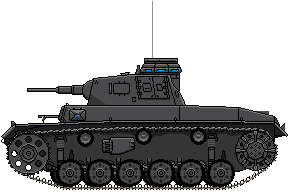
SdKfz 141 / PzKpfw III Ausf. E
This first production model weighed in at 20 tons, because of the 3 cm rolled homogeneous armour upgrade. It had torsion arm suspension with six road wheels, where prototypes used leaf spring or bogie suspension. Only 96 were built, but those set the pace for a whole family of good machines.
- RAL 7016
- 3.7 cm KwK L/46,5
- Maybach HL 120TR
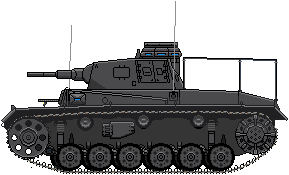
PzBfw III Ausf. E1
The Panzerbefehlswagen command vehicle had an extra long range radio. Its fixed turret sported a dummy gun, to create extra room for looking at maps and drawing battle lines.
- RAL 7016
- Fake gun
- FuG 5 + FuG 7 or 8
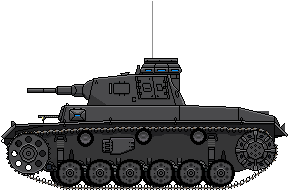
PzKpfw III Ausf. F - "Ticket to ride"
As Guderian said: "Fahrkarte bis zur Endstation!" or Go as far as you can, as fast as you can!. This Panzer III got that ticket and was the first mass production Panzer III. An updated version of the E model, it had a Notek light, a rain guard for the driver and slightly wider tyres. This type blends in with its successor: late model Fs had new 5cm gun, wider tracks and 3cm bolt-on front armour.
- 5cm KwK L/42
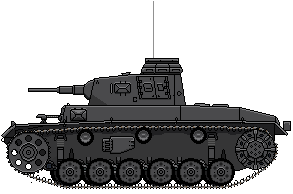
PzKpfw III Ausf. G (Early)
The distinction betweel late model Fs and early model Gs in unclear, mainly because the vehicles were made by several companies and those all wanted to finish their existing parts stocks before they started using updated parts. Hence some early model Gs had the 3,7cm Panzer Anklopf-gerät that was already being phased out.
- Redesigned turret: new cupola, back plate and pistol ports
- New driver visor
- No more fake turret periscope
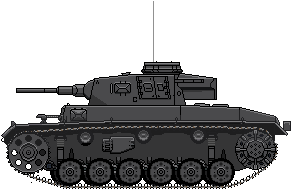
PzKpfw III Ausf. G (Late)
Mid-production vehicles were equipped with a slightly redisigned turret, a redesigned driver's visor and maybe the new 40cm tracks. Then, from April 1941 onwards, vehicles received the distinctive storage bin (or "Rommelkisten").
- First return roller moved forward
- New 40cm track plus sprockets
- Appliqué armour on the hull's front and rear
- Added Rommelkisten turret bustle
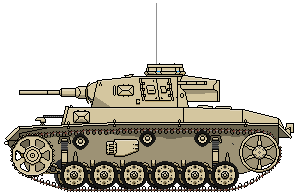
PzKpfw III Ausf. H
The model H production batch (408 vehicles, made between October '40 and April '41) had some minor changes. Exactly which upgrades were fitted to a vehicle, and which were not, kind of depended on the factory that made it.
- This one is in RAL8020 "Sandbraun" for desert warfare
- New tow hooks
- Different fan covers for the engine deck
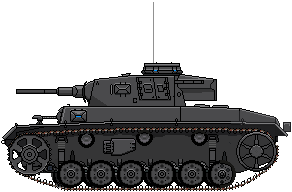
PzKpfw III Ausf. J (Early)
Annoyed with all the variation, the Waffenamt tried to consolidate all previous updates in one vehicle type, across all builders. It had the new turret, wide tracks and updated sprocket and idler wheels.
- Incorporates all previous updates
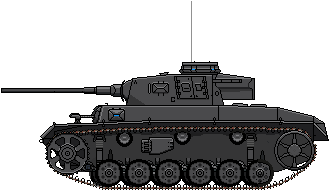
PzKpfw III Ausf. J (Late)
As they now had a unified, updated vehicle, the design teams could again start fiddling with a bigger this or an improved that. If I remember correctly, this was (by far) the most produced model of the range, but ofcourse there were update and conversion programs, making the art of Panzer III model determination even harder.
- 5cm KwK L/60
- Fromtal armour was upped to 5 cm
- The tow hooks were now just holes in the extended side armour plates
- The engine deck was extended
- New and larger engine covers were fitted (again)
- The headlight moved forward
- A ball mount for the hull MG was introduced.
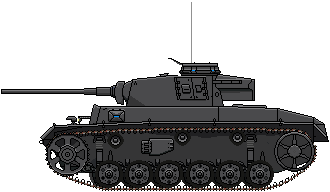
PzKpfw III Ausf. L
Model L had some slight changes, but it was basically just the June 1942 production batch.
- Added 2cm armour plates to the hull front and gun mantlet
- For some reason, the hull escape hatches were removed. (You'd think escape hatches are a good idea?)
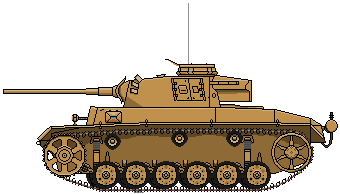
PzKpfw III Ausf. M: The "Wetlands" version
This one had new deepwading exhaust (obviously) and a bunch of other changes (like splash guards) that make working in wet areas easier.
- RAL 7028 DGnM '43
- Rear smoke candles swapped for turret mounted S-mine dischargers
- Deep wading exhaust
- added Schürzen brackets
- Winterketten
- New Bosch headlights
- Redesigned tailplate
- Splash guard plus a ring mount for an MG on the cupola
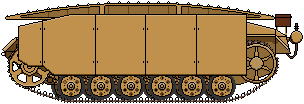
PzPioW III Ausf. M
An engineering vehicle ("Panzerpionierewagen") without turret, but with a 4 meter bridge. I'm not sure what river they wanted to cross with that.
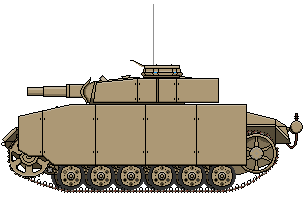
PzKpfw III Ausf. N
After meeting the OG blyatmobile, the Wehrmacht realised a 5cm PAK was no longer good enough. The Panzer III couldn't take a bigger gun, however, so the AT-role was switched to the Panzer IV F2 onwards. This N model got the IV-D's old gun, some extra armour and Schürzen overall as standard. In that role, it tried to keep up with the war but really, it was now firmly obsolete so the hulls were better used to build StuGs.
- RAL 7028 DGnM I '44
- 7.5cm L/24 gun
- Hull and turret Schürzen
Sturmgeschütz III
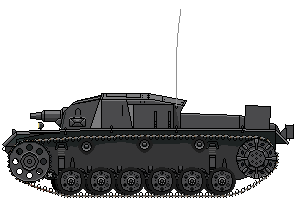
StuG III Ausf. A1
The first StuG production batch of 30 vehicles used a redesigned Panzer III Ausf. E chassis. Some of them fought in the French campaign, but most were headed East.
- RAL7016
- No side escape hatch
- A splash guard for the driver
- No cooling vents fore the brakes - bad isea!
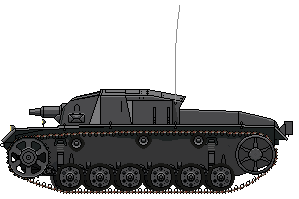
StuG III Ausf. A2 / B
Now directly based on a Panzer III hull (G and H respectively), these StuGs were still field-testing the concept.
- 40cm tracks
- New exhaust muffler
- New gunner hatch and periscope
- Notek headlight
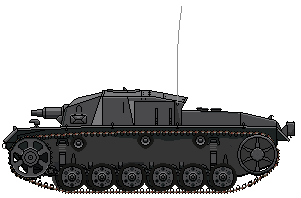
StuG III Ausf. C / D / E
Models C, D and E were nearly identical. Again there were some updates, and there was even a "Tropical" version of the Ausf D. In total, this batch consisted of 100 + 150 + 184 vehicles.
- Smoke dischargers on the rear hull and
- New idler wheel
- A larger hatch for the loader
- Relocated gunner's periscope to the roof, to avoid seeing bushes all the time
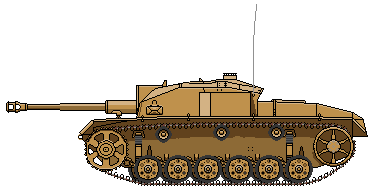
StuG III Ausf. F8
The first F model received a long barrel 7,5cm L/43 gun and a bunch of upgrades. However, it was only a temporary fix. The main F8 model was based on the Panzer III J or M, and it got an even longer L/48 gun. Plus a bunch of upgrades, like a cope cage for the periscope hatch.
- Hull plate tow eyes
- Multidirectional turret hatches
- Raised roof to house the L/48
- Sometimes extra bolted or welded armour - whatever was on hand
PzKpfw III customs
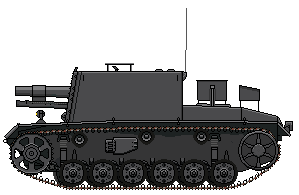
SiG-33
The Sturm-Infanteriegeschütz 33B was a Panzer III chassis sporting a 15 cm sIG 33 heavy infantry gun in an armoured box. Twenty-four of these were built, and half of those were left in Stalingrad, possibly inspiring the Su-76i.
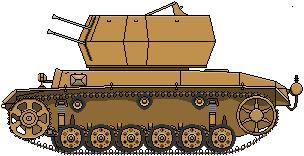
FlaKPz III / 2cm Flakvierling 38 "Wirbelwind"
Because the production of the official Ostwind IV was so slow, Ostbau at Sagen tried tried mounting a 2 cm Flakvierling 38 on a Panzer III M chassis. That version was dropped, in favour of the 3,7cm version
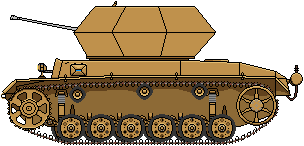
FlaKPz III / 3,7cm FlaK 43 "Ostwind"
The second prototype converted from a Panzer III chassis and sporting a larger gun, this was ordered into production. However, by March 12th 1945, only 12 turrets had been built so that project too was going nowhere.